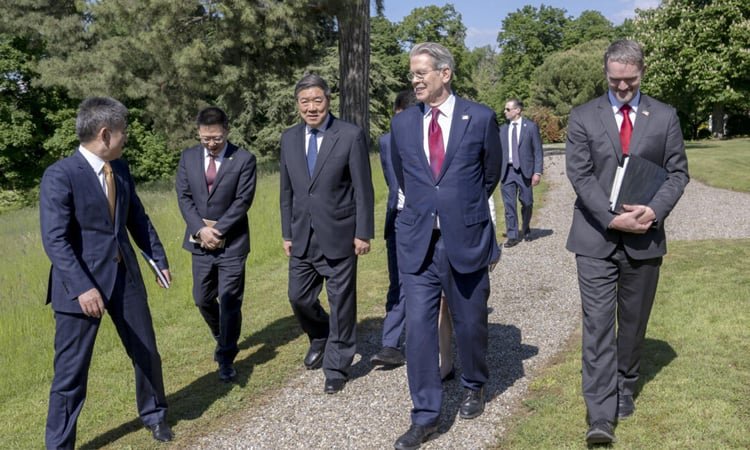
Top economic officials from the United States and China are set to resume negotiations Monday in Stockholm, with the potential extension of lowered tariffs on the table.
The talks come at a pivotal moment for President Donald Trump’s trade policy, as a series of temporary trade truces and looming deadlines could reshape global economic ties by the end of the week.
The two-day meeting in the Swedish capital brings together US Treasury Secretary Scott Bessent and Chinese Vice Premier He Lifeng. Their goal: to avoid a sharp escalation in tariffs when the current 90-day pause — agreed during May’s Geneva meeting — expires on August 12.
For dozens of other trading partners, the stakes are also high. Countries like Brazil and India could see tariffs on their exports to the US soar from 10% to as much as 50% by Friday, August 1, if deals are not finalized in time. The Trump administration’s tariff regime has already raised duties to levels not seen since the 1930s, according to Yale University’s Budget Lab.
Signs of progress
Though no major breakthroughs are expected immediately from the US-China talks, officials and analysts say the tone of engagement has improved in recent weeks.
“There seems to have been a fairly significant shift in administration thinking on China since the London talks,” said Emily Benson, strategy lead at Minerva Technology Futures. “The mood now is much more focused on what’s possible to achieve, on warming relations where possible, and restraining any factors that could increase tensions.”
Benson noted that limited flows of rare earth materials and semiconductors between the two countries have resumed, suggesting cautious optimism. A further 90-day extension of the tariff pause is under discussion, with both sides reportedly close to agreement, according to the South China Morning Post.
Trade momentum builds elsewhere
In recent days, Trump has announced trade pacts with the European Union, Britain, Vietnam, Japan, Indonesia, and the Philippines, though few specifics have been released. The EU unveiled a deal with Washington on Sunday, while South Korea is hurrying to secure its own agreement.
These negotiations follow the administration’s move in April to delay sweeping tariff hikes, originally targeting dozens of trading partners. Since then, talks have produced mixed results.
“This is still far from the ideal scenario,” said Thibault Denamiel of the Centre for Strategic and International Studies. “But it shows some progress — especially with priority partners like the EU, Japan, and the Philippines.”
However, Denamiel warned against neglecting less prioritized countries. “If Washington wants to diversify supply chains, enforce tech controls, and address Chinese overcapacity, it can’t afford to overlook secondary partners,” he said.
Business optimism, but cautious expectations
Sean Stein, president of the US-China Business Council, said markets are watching more for the tone than the specifics of the Stockholm talks.
“The business community is optimistic that the two presidents will meet later this year, hopefully in Beijing,” he said. “It’s clear that on both sides, the final decision-maker is going to be the president.”
Sweden’s Prime Minister Ulf Kristersson welcomed the talks, calling them a “positive development” amid heightened global economic uncertainty.
With deadlines approaching and global markets on edge, much depends on whether Washington and Beijing can maintain momentum — and whether recent deals with other nations are a sign of broader stability, or just temporary relief in an ongoing trade battle.
 Weekly Bangla Mirror | Bangla Mirror, Bangladeshi news in UK, bangla mirror news
Weekly Bangla Mirror | Bangla Mirror, Bangladeshi news in UK, bangla mirror news







